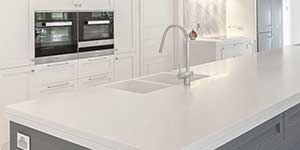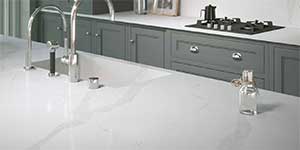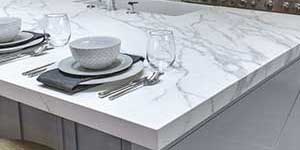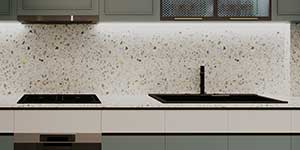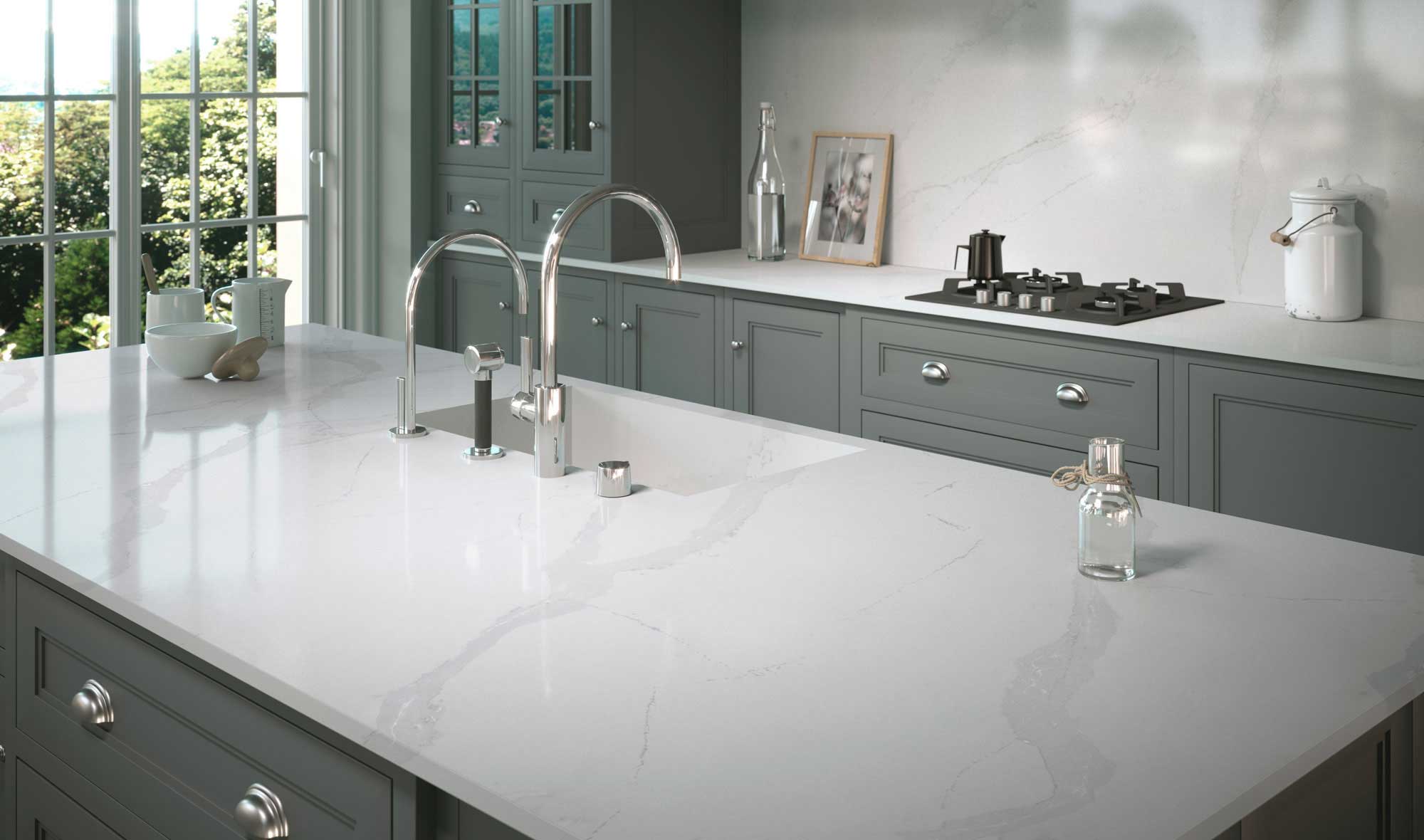These two popular brands of top-end worktops are often thought about as if they were just different trademarks of the same type of material, but in fact they are vastly different surfaces, from composition, to the manufacturing process, appearance and choice of one over the other, although it would be hard to pronounce one “better” than the other. The choice would be determined rather by personal preference and particular circumstances.
While both are manufactured from natural stone to create the best quality non-porous worktops, Corian and Silestone are not even classified in the same category of worktop surfaces. Corian is classified as a reconstituted solid surface material, composed mainly of bauxite minerals, while Silestone is classified in the engineered stone category, composed mainly of quartz.
“Solid surface” means that the product has a higher amount of resins to improve the flexibility, strength and resilience of natural stone; “quartz” means that the product has a much higher natural stone content with a smaller percentage of resins, making it the more stone-like material of the two. The resin content does not make a significant difference in the performance and appearance though. There are other more significant qualities that distinguish them and determine when one would choose solid surface or quartz worktops.
What are the similarities between Corian and Silestone?
Both are:
- Manufactured from natural stone, with polymer resins added, improving on the appearance and qualities of the natural stone from which they are manufactured;
- At the top end of luxury and style;
- Non-porous, highly stain resistant;
- Neither requires any sealing or special maintenance;
- Easily cleaned and maintained;
- Have a vast array of colours, textures, styles and patterns;
- More colour consistent than natural stone;
- Have a wide choice of accessories, integrated basins and sinks, up-stands, back-splashes, etc;
- Used for worktops, flooring and wall cladding;
- Free, or virtually free, from Radon found in natural granite (asserted to be harmful);
- Both carry a 10 year warranty.
What are the main differences between Corian and Silestone?
- Corian is made primarily from Bauxite minerals, while Silestone is made primarily from quartz and silica;
- Corian contains a higher percentage polymer resin than Silestone;
- Silestone contains a higher percentage natural stone than Corian (Silestone 94% and Corian 66%);
- Both are ultra-hygienic, but Silestone has a unique antibacterial agent baked into the resin, actually killing bacteria;
- Silestone is much harder than Corian (or in fact almost any other surface with a score of 7 on the Mohs scale, compared to Granite’s 3);
- Highly resistant to scratches, heat and other damage, while Silestone is even more resistant to heat and scratches than Corian (remember, neither is indestructible and care should be taken to protect your investment);
- Corian is easier to repair than Silestone in the unlikely event of damage;
- Silestone is more resistant to acids than Corian;
- Both have a vast array of colours, but Corian offers an even wider choice than Silestone;
- Both can be almost seamlessly joined, with nowhere for germs and dirt to accumulate, although the seams will be even less apparent in Corian than in Silestone;
- Silestone has a much more lustrous and three-dimensional appearance because of the embedded quartz crystals;
- Corian is made by DuPont, on whose 1960’s patent all other solid surface materials are derived. Silestone is produced by Consentino, who patented their bacteriologic formula in the 1990’s;
- Corian is more versatile than Silestone in as much as it can be formed, moulded, shaped and engraved;
- Silestone is generally more expensive than Corian.
Repairable
Heavy stains and scratches can be erased without a trace simply by rubbing with household cleaner
Durable
Proven to be remarkably durable, a versatile material that is easy to live with in both domestic and commercial environments
Nonporous
Bacteria and mould have nowhere to take root. When it looks clean, it really is clean
Seamless
Inconspicuous seams result in a smooth surface that enables you to create large designs fashioned from a single element

Easy to Clean
With a non-porous surface that prevents dirt and stains from penetrating the material.
Benefits of Corian over Silestone
- Greater variety of colours, textures, patterns, styles and finishes.
- Also available in matte finish if that is your choice.
- Easier to repair when damaged.
- Greater versatility for complex designs and artistic applications.
- Imperceptible joints, giving a unified appearance.
- Cheaper than Silestone.
Benefits of Silestone over Corian
- Harder and more durable than any other worktop surface.
- More resistant to stains and damage.
- Radiant finish and 3-dimensional appearance “inside” the surface if you require a more lustrous appearance.
- Unmatched hygiene and antibacterial qualities.
- Higher natural stone content.
Other inspiring articles
Exclusive 40% OFF on 6 colours of the new Caesarstone Porcelain Collection
Caesarstone, a world-renowned leader in premium surface materials, has expanded its impressive portfolio by introducing a new line of porcelain worktops. Famous for their high-quality quartz surfaces, Caesarstone’s venture into porcelain showcases their dedication [...]
Why Silestone Eternal Calacatta Gold is one of the UK’s best selling worktop colours
In the world of interior design, the kitchen is more than just a functional space; it's the heart of the home, a place where style meets practicality. One of the standout stars in kitchen [...]
A Solid Choice: Why Solid Surface Worktops are a Top Pick for your Kitchen
Solid surface worktops, such as Corian, Hanex, and Hi-macs, have been steadily gaining popularity in the world of kitchen design and renovation. While there's a plethora of worktop materials to choose from, solid surface [...]
Choosing the Perfect Kitchen Worktop
A comprehensive guide to Quartz, Solid Surface, Ultra Compact, Granite, and Wood When it comes to designing your dream kitchen, one of the most crucial decisions you'll make is selecting the perfect [...]

